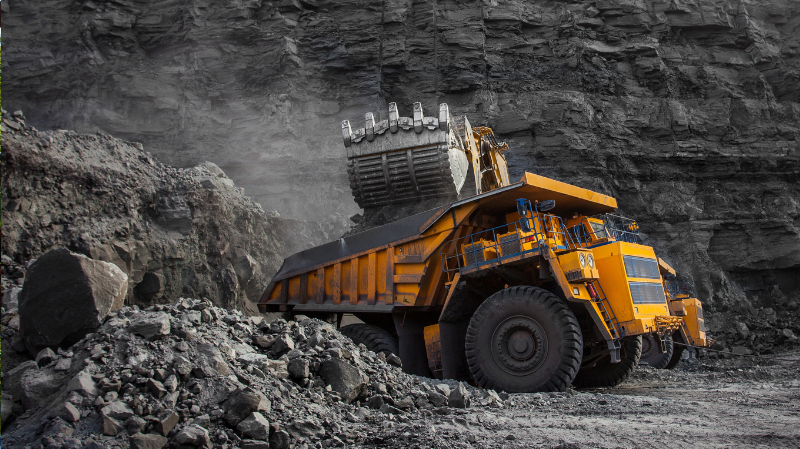The Australia mining market, valued at AUD 758.33 billion in 2023, continues to see steady growth, driven by its pivotal role in supplying essential resources that fuel both national and global infrastructure development. The mining sector is expected to expand at a compound annual growth rate (CAGR) of 5.10% from 2024 to 2032, reaching AUD 1186.54 billion by 2032. This growth is largely attributed to Australia’s mining activities that are not only crucial for infrastructure projects like roads and railways but also the sector’s significant contributions to skills development and workforce training.
Australia’s Mining Industry: A Key Economic Driver
Australia is home to vast natural resources, which are the backbone of its mining industry. The mining sector has long played an essential role in Australia’s economic growth, accounting for a substantial portion of the country’s GDP. As a leader in the global mining industry, Australia is a major exporter of various minerals and resources, including coal, iron ore, gold, bauxite, and natural gas. The mining sector’s growth prospects are underpinned by robust demand for these resources across industries such as construction, energy production, and manufacturing.
As Australia’s mining activities ramp up to meet global demand, the market is expected to expand further, particularly in light of the increased demand for infrastructure development, such as transport networks, energy projects, and construction activities. Mineral exports will continue to support Australia’s position in global trade, further propelling market growth.
Key Drivers of Growth in the Australia Mining Market
1. Infrastructure Development and Demand for Raw Materials
The development of roads, railways, and other infrastructure projects is one of the biggest driving forces behind the mining industry’s growth. Resources like iron ore, copper, and coal are integral to the construction of vital infrastructure projects. Australia’s focus on modernizing and expanding its infrastructure is set to fuel demand for these resources. Additionally, as countries around the world increase their demand for infrastructure, Australia is well-positioned to export raw materials to satisfy that demand, further boosting market growth.
2. Expanding Workforce Training and Development
A key component contributing to the sustainability and growth of the mining market in Australia is the sector’s emphasis on workforce training and development. With mining companies adopting more advanced technologies and automation processes, it has become increasingly important to ensure that the workforce is equipped with the right skills. As a result, mining companies in Australia are investing heavily in training programs to enhance the skill sets of workers. This not only boosts productivity but also contributes to reducing safety risks and improving overall operational efficiency in mining operations.
Additionally, workforce training in areas such as safety management, technology integration, and sustainability practices is vital in fostering long-term growth and meeting environmental standards. This investment in skill development is expected to enhance the productivity of the Australian mining sector, making it more competitive in the global market.
3. Technological Innovations in Mining Operations
Technological advancements, particularly in automation and digitalization, are transforming the mining landscape in Australia. Automation, data analytics, and artificial intelligence (AI) are being increasingly deployed in mining operations, improving productivity and reducing operational costs. Automated mining trucks, advanced drilling technologies, and predictive maintenance systems are all helping mining companies operate more efficiently and safely.
By incorporating these innovations, Australia’s mining companies can extract resources faster and more cost-effectively, further driving the market’s growth. The integration of technology also opens the door for more sustainable mining practices, addressing environmental concerns while increasing output.
4. Global Demand for Clean Energy Resources
The global push toward clean energy is another factor contributing to the growth of the mining sector in Australia. As countries strive to meet climate change goals, the demand for raw materials like lithium, cobalt, nickel, and rare earth elements has surged. These materials are essential for producing batteries used in electric vehicles (EVs), solar panels, and wind turbines—all of which are integral to the global transition to cleaner energy sources.
Australia’s mining industry is at the forefront of producing these materials, making it a critical supplier in the global clean energy revolution. The country’s abundant reserves of these critical minerals position it to meet the growing demand, and the increased focus on sustainable energy resources will likely propel the mining market to even greater heights.
Challenges Facing the Australia Mining Market
1. Environmental Concerns and Sustainability
Despite the strong growth outlook, the Australian mining industry faces increasing pressure from environmentalists, regulators, and local communities to adopt sustainable mining practices. The environmental impact of mining operations, including land degradation, water usage, and carbon emissions, is an ongoing concern. As environmental regulations tighten globally, Australian mining companies are being urged to invest in eco-friendly technologies, reduce their carbon footprint, and ensure responsible resource extraction.
Sustainability initiatives, including recycling, reforestation, and water conservation, are becoming integral to mining operations in Australia. Firms are adopting these practices to meet regulatory requirements and improve their public image, especially as consumers and investors become more environmentally conscious.
2. Labor Shortages
The mining industry is facing a potential labor shortage, exacerbated by the growing demand for skilled workers and the increasing use of automation technologies. While technology can address some labor shortages, the need for a highly trained workforce remains a significant challenge. This issue is compounded by an aging workforce and the need for more younger workers to enter the industry.
Mining companies are responding by investing in training programs and talent development initiatives to prepare a new generation of workers for careers in mining. In addition, firms are partnering with universities and vocational schools to promote mining as a viable and attractive career option.
3. Geopolitical Risks
The Australian mining sector is exposed to geopolitical risks, particularly as global trade relationships evolve. Australia’s dependence on exports to countries like China means that any political instability or changes in trade policies can affect the mining market. Trade tensions, supply chain disruptions, and changing tariffs can pose challenges to the profitability of Australian mining companies.
Here is some additional information about the Australia mining market:
1. Strategic Importance of Mining to the Australian Economy
The mining industry is a cornerstone of the Australian economy, not only in terms of its direct economic contribution but also as a key enabler of various industries. With mining exports representing a substantial portion of Australia’s GDP, the sector is essential for maintaining the nation’s trade balance.
- In particular, iron ore, coal, and natural gas are major export commodities, and Australia ranks as one of the top producers globally.
- The mining industry also provides a steady flow of employment across rural and regional areas, offering high-paying jobs and benefiting surrounding communities.
2. Export Markets and Global Trade Partnerships
Australia’s mining market is heavily influenced by global demand for minerals and natural resources. The country’s proximity to the rapidly growing economies in Asia, particularly China, India, and Japan, makes it an essential player in the global mining industry. Trade agreements and partnerships with countries across these regions will likely shape the future of Australia’s mining exports.
- China remains Australia’s largest trading partner, especially for iron ore and coal, while India is increasingly looking to Australia for coking coal and lithium, which are essential for steel production and battery technologies.
- Given the increasing demand for green metals like lithium, nickel, and cobalt, Australia’s position as a top producer of these minerals is crucial to support the global clean energy transition.
3. Environmental and Ethical Mining Practices
Australia is increasingly prioritizing sustainable mining practices to address growing concerns regarding the environmental impact of mining activities. Companies in Australia are making significant efforts to reduce carbon emissions and adopt eco-friendly technologies to meet the country’s climate targets and improve the sustainability of their operations.
Several Australian mining companies have committed to net-zero emissions targets, with some even adopting renewable energy sources for their operations, reducing reliance on fossil fuels. Initiatives to reduce land degradation, minimize water consumption, and improve waste management practices are also gaining momentum in the industry.
- Ethical mining practices have become a focal point in ensuring that the rights of local communities, including indigenous groups, are respected. Many mining companies now work closely with local stakeholders to maintain transparency, particularly in terms of land use and compensation.
4. Exploration and Resource Discovery
Australia’s mining industry continues to benefit from exploration activities and the discovery of new mineral resources. Technological advancements in exploration techniques, such as geophysical surveys and remote sensing, have led to new findings of previously untapped resources.
- Gold, copper, and rare earth minerals remain prime targets for exploration. With increasing global demand for these materials, Australia has the potential to expand its mining capacity significantly in the coming years.
- Emerging technologies such as blockchain are being explored to track minerals throughout the supply chain, offering greater transparency and helping combat illegal mining practices.
5. Mining Equipment and Technology
The demand for mining equipment and advanced machinery continues to increase as Australian mining companies modernize their operations. Key technological trends in the Australian mining sector include:
- Automation: Automated trucks, drilling machines, and other equipment are used to increase efficiency and reduce the risk of human error in mining operations. Remote-controlled and autonomous equipment is also helping to minimize the risks associated with mining in dangerous areas.
- Artificial Intelligence and Machine Learning: Mining companies are utilizing AI and machine learning algorithms for predictive maintenance, mineral exploration, and even optimizing the supply chain, reducing costs, and maximizing productivity.
- Drones and Robotics: Drones are being employed for aerial surveys and inspections, particularly in hard-to-reach locations. Robotics is used for tasks such as sampling and material handling, ensuring greater accuracy and safety.
6. Government Support and Regulations
The Australian government plays a pivotal role in shaping the future of the mining market through policies, regulations, and initiatives aimed at supporting growth and ensuring sustainability. These include:
- Tax incentives for exploration and research in the mining sector to promote investment in new projects.
- Strict environmental regulations to ensure that mining companies adhere to the highest standards of sustainability.
- Financial support for indigenous communities impacted by mining activities, ensuring that they share in the economic benefits and that their cultural heritage is protected.


